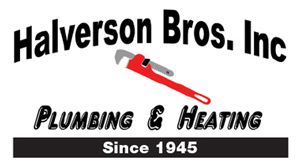
The windows in your home open up to the outdoors, a way to draw light in while you appreciate the view of your garden, yard or scenery. The last thing you need to see is a sweaty window coated in a coating of condensation.
Not only are windows plastered with condensation unappealing, they also can be evidence of a larger air-quality issue in your home. Luckily, there’s several things you can try to resolve the problem.
What Creates Condensation in Windows
Condensation on the inner layer of windows is produced by the moist warm air in your home hitting the cold surface of the windows. It’s particularly prevalent around the winter when it’s much chillier outside than it is inside your home.
Inside Moisture vs. In Between Panes
When dealing with condensation, it’s crucial to understand the distinction between moisture on the inside of your windows versus moisture in between the windowpanes. One is an air-quality issue and the other is a window issue.
- Moisture on the inside of a window is caused from the warm moist air throughout your home collecting along the glass.
- Any moisture you see between windowpanes is formed when the window seal fails and moisture slips between the two panes of glass, and at that point the window has to be repaired or replaced.
- Condensation inside the windows isn’t a window situation and can instead be resolved by changing the humidity inside your home. Different things cause humidity in a home, like showers, cooking, taking a bath or even breathing.
Why Condensation on Windows Can Be Trouble
Although you might presume condensation inside your windows is a cosmetic problem, it could also be evidence your home has higher humidity. If this is the case, water might also be collecting on window frames, cold walls or other surfaces. Even a small film of water can encourage wood surfaces to mildew or rot over time, increasing the growth of mildew or mold.
How to Lower Humidity in Your Home
The good news is there are numerous options for eliminating moisture from the air in your home.
If you have a humidifier operating inside your home – whether it be a smaller unit or a whole-house humidifier – lower it further so the humidity inside your home comes down.
If you don’t have a humidifier running and your home’s humidity level is excessive, think about installing a dehumidifier. While humidifiers adds moisture in your home so the air doesn’t become too dry, a dehumidifier draws excess moisture out of the air.
Compact, portable dehumidifiers can eliminate the water from one room. However, these units require emptying out water trays and usually service a somewhat limited area. A whole-house dehumidifier will eliminate moisture throughout your entire home.
Whole-house dehumidifier systems are controlled by a humidistat, which enables you to set a humidity level precisely like you would select a temperature on your thermostat. The unit will start automatically when the humidity level exceeds the set level. These systems collaborate with your home’s HVAC system, so you will receive the best results if you contact qualified professionals for whole-house dehumidifier installation Menomonie and western Wisconsin.
Additional Ways to Eliminate Condensation on Windows
- Exhaust fans. Putting in exhaust fans around humidity hotspots like the bathroom, laundry room or above the kitchen range can help by extracting the warm, humid air from these rooms out of your home before it can elevate the humidity level in your home.
- Ceiling fans. Turning on ceiling fans can also keep air flowing within the home so humid air doesn’t get trapped in one area.
- Opening up window treatments. Opening the blinds or drapes can lower condensation by preventing the humid air from being caught against the windowpane.
By decreasing humidity across your home and moving air throughout your home, you can take advantage of clear, moisture-free windows even in the winter.






